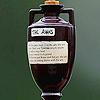| So many still don't understand what VAR can look at. 10:04 - Nov 5 with 4198 views | Blue_In_Boston |
VAR is awful, yes agreed but can people familiarise themselves with what it can review before whinging about it?
It can't look at incidents involving second yellow cards, so Phillips and Clarke's sending off have nothing to do with VAR. Come on, keep up with the laws of the game... |  | | |  |
| So many still don't understand what VAR can look at. on 10:09 - Nov 5 with 3573 views | IPSWICHFANITFC |
They wouldn't have been overruled either even if VAR could intervene. |  |
|  |
| So many still don't understand what VAR can look at. on 11:50 - Nov 5 with 3428 views | Asa |
It's pretty well documented what it can look at.
- Arsenal
- Man City
- Spurs
- Man Utd
- Chelsea
- Liverpool
Sometimes Newcastle and Aston Villa, depending on the opposition. |  | |  |
| So many still don't understand what VAR can look at. on 12:41 - Nov 5 with 3329 views | Jon_456 |
VAR itself is fine, it’s the people using it and the processes they follow which needs ripping up and starting again.
I’d rather VAR scrapped totally but if it is to remain, I’d love to see teams get a number of reviews each where they can review any incident, including yellow cards etc. If ref changes their mind, they keep the review, if not then they lose it. |  | |  |
| So many still don't understand what VAR can look at. on 12:49 - Nov 5 with 3298 views | SmithersJones |
| So many still don't understand what VAR can look at. on 12:41 - Nov 5 by Jon_456 |
VAR itself is fine, it’s the people using it and the processes they follow which needs ripping up and starting again.
I’d rather VAR scrapped totally but if it is to remain, I’d love to see teams get a number of reviews each where they can review any incident, including yellow cards etc. If ref changes their mind, they keep the review, if not then they lose it. |
Joe made a good point on Blue Monday. Sometimes a yellow card (including a second yellow) is given for an accumulation of minor fouls, so not sure how VAR would work for bookings. |  | |  |
| So many still don't understand what VAR can look at. on 12:53 - Nov 5 with 3281 views | PioneerBlue |
I know few will read this but here are the IFAB rules verbatim.
We fell foul to rule 2, VAR didn’t feel there was sufficient reason for the Ref to review, and also rule 9 means KP would have still received the yellow based on the Refs decision not to have awarded the pen. Only the ref giving the first foul could have stopped all this, but then VAR may have decided that Chappers fell to the floor by himself and didn’t want the shot which may mean the decision would have been overturned, but at least in that situ KPs yellow wouldn’t have happened because the game would have stopped!
Principles
The use of VARs in football matches is based on a number of principles, all of which must apply in every match using VARs.
1. A video assistant referee (VAR) is a match official, with independent access to match footage, who may assist the referee only in the event of a ‘clear and obvious error’ or ‘serious missed incident’ in relation to:
a. Goal/no goal
b. Penalty/no penalty
c. Direct red card (not second yellow card/caution)
d. Mistaken identity (when the referee cautions or sends off the wrong player of the offending team)
2. The referee must always make a decision, i.e. the referee is not permitted to give ‘no decision’ and then use the VAR to make the decision; a decision to allow play to continue after an alleged offence can be reviewed.
3. The original decision given by the referee will not be changed unless the video review clearly shows that the decision was a ‘clear and obvious error’.
4. Only the referee can initiate a ‘review’; the VAR (and other match officials) can only recommend a ‘review’ to the referee.
5. The final decision is always taken by the referee, either based on information from the VAR or after the referee has undertaken an ‘on-field review’ (OFR).
6. There is no time limit for the review process as accuracy is more important than speed.
7. The players and team officials must not surround the referee or attempt to influence if a decision is reviewed, the review process or the final decision.
8. The referee must remain ‘visible’ during the review process to ensure transparency.
9. If play continues after an incident which is then reviewed, any disciplinary action taken/required during the post-incident period is not cancelled, even if the original decision is changed (except a caution/sending-off for stopping or interfering with a promising attack or DOGSO).
10. If play has stopped and been restarted, the referee may not undertake a ‘review’ except for a case of mistaken identity or for a potential sending-off offence relating to violent conduct, spitting, biting or extremely offensive, insulting and/or abusive action(s).
11. The period of play before and after an incident that can be reviewed is determined by the Laws of the Game and VAR protocol.
12. As the VAR will automatically ‘check’ every situation/decision, there is no need for coaches or players to request a ‘review’. [Post edited 5 Nov 2024 14:42]
|  |
|  |
| So many still don't understand what VAR can look at. on 12:58 - Nov 5 with 3244 views | BlueRaider |
| So many still don't understand what VAR can look at. on 12:41 - Nov 5 by Jon_456 |
VAR itself is fine, it’s the people using it and the processes they follow which needs ripping up and starting again.
I’d rather VAR scrapped totally but if it is to remain, I’d love to see teams get a number of reviews each where they can review any incident, including yellow cards etc. If ref changes their mind, they keep the review, if not then they lose it. |
Exactly, and make it transparent like cricket and rugby where the conversation is played to the crowd, and the incident is shown on the big screens |  |
|  |
| So many still don't understand what VAR can look at. on 13:03 - Nov 5 with 3226 views | Plums |
| So many still don't understand what VAR can look at. on 12:53 - Nov 5 by PioneerBlue |
I know few will read this but here are the IFAB rules verbatim.
We fell foul to rule 2, VAR didn’t feel there was sufficient reason for the Ref to review, and also rule 9 means KP would have still received the yellow based on the Refs decision not to have awarded the pen. Only the ref giving the first foul could have stopped all this, but then VAR may have decided that Chappers fell to the floor by himself and didn’t want the shot which may mean the decision would have been overturned, but at least in that situ KPs yellow wouldn’t have happened because the game would have stopped!
Principles
The use of VARs in football matches is based on a number of principles, all of which must apply in every match using VARs.
1. A video assistant referee (VAR) is a match official, with independent access to match footage, who may assist the referee only in the event of a ‘clear and obvious error’ or ‘serious missed incident’ in relation to:
a. Goal/no goal
b. Penalty/no penalty
c. Direct red card (not second yellow card/caution)
d. Mistaken identity (when the referee cautions or sends off the wrong player of the offending team)
2. The referee must always make a decision, i.e. the referee is not permitted to give ‘no decision’ and then use the VAR to make the decision; a decision to allow play to continue after an alleged offence can be reviewed.
3. The original decision given by the referee will not be changed unless the video review clearly shows that the decision was a ‘clear and obvious error’.
4. Only the referee can initiate a ‘review’; the VAR (and other match officials) can only recommend a ‘review’ to the referee.
5. The final decision is always taken by the referee, either based on information from the VAR or after the referee has undertaken an ‘on-field review’ (OFR).
6. There is no time limit for the review process as accuracy is more important than speed.
7. The players and team officials must not surround the referee or attempt to influence if a decision is reviewed, the review process or the final decision.
8. The referee must remain ‘visible’ during the review process to ensure transparency.
9. If play continues after an incident which is then reviewed, any disciplinary action taken/required during the post-incident period is not cancelled, even if the original decision is changed (except a caution/sending-off for stopping or interfering with a promising attack or DOGSO).
10. If play has stopped and been restarted, the referee may not undertake a ‘review’ except for a case of mistaken identity or for a potential sending-off offence relating to violent conduct, spitting, biting or extremely offensive, insulting and/or abusive action(s).
11. The period of play before and after an incident that can be reviewed is determined by the Laws of the Game and VAR protocol.
12. As the VAR will automatically ‘check’ every situation/decision, there is no need for coaches or players to request a ‘review’. [Post edited 5 Nov 2024 14:42]
|
Thank you for sharing that. I think you're sadly correct that most won't bother to read it because it's far easier to remain oblivious and complain than try and understand.
I'm not a fan of VAR but as we're stuck with it, we should at least know how it works.
As a slight tangent; football's relationship with the laws of the game is very odd. For example, I'm not aware of any other sport where the referee feels they need to explain the laws to professional participants as referees do with goalkeepers and penalties. It's almost as though ignorance is expected. [Post edited 5 Nov 2024 13:04]
|  |
|  |
| So many still don't understand what VAR can look at. on 13:08 - Nov 5 with 3197 views | Churchman |
| So many still don't understand what VAR can look at. on 12:41 - Nov 5 by Jon_456 |
VAR itself is fine, it’s the people using it and the processes they follow which needs ripping up and starting again.
I’d rather VAR scrapped totally but if it is to remain, I’d love to see teams get a number of reviews each where they can review any incident, including yellow cards etc. If ref changes their mind, they keep the review, if not then they lose it. |
VAR is not fine. It adds nothing to the game with the exception of a potential get out/safety net for the important clubs (e.g. Coventry v Man Utd).
It wrecks the flow of the game and takes the spontaneity out of it. Football reduced to a berk in a box who half the time still gets it wrong.
Human error is part of the game, like everything in life. Review systems work well in stop start sports like cricket and NFL, but not football, even if it does give annoying mugs like Gallagher something to bore on about.
Goal line technology: yes. VAR: no. |  | |  |
Login to get fewer ads
| So many still don't understand what VAR can look at. on 13:12 - Nov 5 with 3170 views | RobTheMonk |
| So many still don't understand what VAR can look at. on 13:08 - Nov 5 by Churchman |
VAR is not fine. It adds nothing to the game with the exception of a potential get out/safety net for the important clubs (e.g. Coventry v Man Utd).
It wrecks the flow of the game and takes the spontaneity out of it. Football reduced to a berk in a box who half the time still gets it wrong.
Human error is part of the game, like everything in life. Review systems work well in stop start sports like cricket and NFL, but not football, even if it does give annoying mugs like Gallagher something to bore on about.
Goal line technology: yes. VAR: no. |
I quite like automated offsides, but it has to be communicated quickly and the margin for offsides has to be crystal clear. |  | |  |
| So many still don't understand what VAR can look at. on 14:13 - Nov 5 with 3059 views | HighgateBlue |
| So many still don't understand what VAR can look at. on 12:49 - Nov 5 by SmithersJones |
Joe made a good point on Blue Monday. Sometimes a yellow card (including a second yellow) is given for an accumulation of minor fouls, so not sure how VAR would work for bookings. |
I agree, and I think VAR's tentacles should be pruned rather than allowed to infiltrate further.
Although, if you really did want it to deal with yellows, you could get the ref to confirm the reason for the card, and if it was a one-off incident that earned the yellow, VAR could look at it. (Although in cricket I don't think the video umpire is constrained to look at only the mode of dismissal called by the umpire on field).
But I really don't want VAR to have that extensive a jurisdiction. One of the (many many) problems with VAR is what test it applies. When VAR looks at something and doesn't overturn it, fans are livid because they thought X whereas the ref thought Y. The VAR may well think X, but if the VAR doesn't think that it's clearly and obviously X, then they let the decision stand that is in their view wrong. That seems absurd and ridiculous when it goes against you. But then, when VAR interferes and makes the call WORSE for one's team, that same fan says "I thought this was only supposed to be for clear and obvious errors, and that wasn't!"
So I think the "clear and obvious" business (which only applies to discretionary decisions btw, not offsides, which are deemed black and white and not a matter of discretion) does not have full buy-in from fans. It has buy in when it goes for you, but not against. I think the VAR job is impossible. You have to decide whether you think it was X or Y, AND you have to decide whether it was clearly Y (when ref said X). Even if all VARs agreed on that first question (which they never will of course, they're human) they will apply very different standards to the latter. The test is so woolly that it piles subjectivity on top of what is already a question on which objective people disagree.
Minefield. No idea what the answer is. Except that our luck needs to start 'evening out' pretty quickly, please! |  | |  |
| So many still don't understand what VAR can look at. on 14:48 - Nov 5 with 2977 views | PioneerBlue |
Any tech that can’t be easily and affordably deployed throughout the pro game is a no from me. It means everyone is on different rule sets. VAR is different but it’s still an no because it’s ruining the spectacle and reducing the game to seeking perfect when it’s not required. While at, VAR and the obsolete number board flapping fourth officials has removed a number of refs / officials from down the leagues and made everyone worse off. We saw it before our eyes in L1 and the Champ! |  |
|  |
| So many still don't understand what VAR can look at. on 14:50 - Nov 5 with 2974 views | kizaitfc |
I do think the second yellow on Phillips should have had an impact on VAR given the clear pen 10 seconds before.
The second yellow made this decision pivotal and simply giving the referee a second look would have been the sensible option.
The referees need to be in control though, the fact that whenever a referee is sent to the monitor they change their mind makes it a more difficult job for VAR as they know they are effectively making the decision.
IMO the only way VAR works is with an appeal system, each team gets one appeal each half and can send the referee for a second look (on his own). Get rid of the 3 extra referees in a van watching highlights in slow motion and let the referee be in charge. |  |
|  |
| So many still don't understand what VAR can look at. on 15:19 - Nov 5 with 2909 views | Wickets |
Would Clarke have got a second yellow if VAR had not decided it was a penalty ? |  | |  |
| So many still don't understand what VAR can look at. on 15:22 - Nov 5 with 2902 views | Wickets |
Would Clarke have got a second yellow if VAR had not decided it was a penalty ? And if VAR had decided that Chaplin was fouled for a penalty as they should have done than Pillips would not have got that second yellow!. |  | |  |
| So many still don't understand what VAR can look at. on 17:22 - Nov 5 with 2750 views | You_Bloo_Right |
| So many still don't understand what VAR can look at. on 12:53 - Nov 5 by PioneerBlue |
I know few will read this but here are the IFAB rules verbatim.
We fell foul to rule 2, VAR didn’t feel there was sufficient reason for the Ref to review, and also rule 9 means KP would have still received the yellow based on the Refs decision not to have awarded the pen. Only the ref giving the first foul could have stopped all this, but then VAR may have decided that Chappers fell to the floor by himself and didn’t want the shot which may mean the decision would have been overturned, but at least in that situ KPs yellow wouldn’t have happened because the game would have stopped!
Principles
The use of VARs in football matches is based on a number of principles, all of which must apply in every match using VARs.
1. A video assistant referee (VAR) is a match official, with independent access to match footage, who may assist the referee only in the event of a ‘clear and obvious error’ or ‘serious missed incident’ in relation to:
a. Goal/no goal
b. Penalty/no penalty
c. Direct red card (not second yellow card/caution)
d. Mistaken identity (when the referee cautions or sends off the wrong player of the offending team)
2. The referee must always make a decision, i.e. the referee is not permitted to give ‘no decision’ and then use the VAR to make the decision; a decision to allow play to continue after an alleged offence can be reviewed.
3. The original decision given by the referee will not be changed unless the video review clearly shows that the decision was a ‘clear and obvious error’.
4. Only the referee can initiate a ‘review’; the VAR (and other match officials) can only recommend a ‘review’ to the referee.
5. The final decision is always taken by the referee, either based on information from the VAR or after the referee has undertaken an ‘on-field review’ (OFR).
6. There is no time limit for the review process as accuracy is more important than speed.
7. The players and team officials must not surround the referee or attempt to influence if a decision is reviewed, the review process or the final decision.
8. The referee must remain ‘visible’ during the review process to ensure transparency.
9. If play continues after an incident which is then reviewed, any disciplinary action taken/required during the post-incident period is not cancelled, even if the original decision is changed (except a caution/sending-off for stopping or interfering with a promising attack or DOGSO).
10. If play has stopped and been restarted, the referee may not undertake a ‘review’ except for a case of mistaken identity or for a potential sending-off offence relating to violent conduct, spitting, biting or extremely offensive, insulting and/or abusive action(s).
11. The period of play before and after an incident that can be reviewed is determined by the Laws of the Game and VAR protocol.
12. As the VAR will automatically ‘check’ every situation/decision, there is no need for coaches or players to request a ‘review’. [Post edited 5 Nov 2024 14:42]
|
I am well aware of where the VAR can and cannot suggest a review (nevertheless I read your post to confirm my understanding).
What I, and I suspect others, cannot understand is why, having reviewed the penalty incident, the VAR didn't recommend a review by the referee.
"Didn't feel there was sufficient reason"? Really? |  |
|  |
| So many still don't understand what VAR can look at. on 17:33 - Nov 5 with 2717 views | FrimleyBlue |
Problem with var is you are still hoping the var official has common sense.
The rules of the game are clear however all refs are open to the fact they interpret the rules differently.
This is the problem you get with var officials. They will interpret the rules their way and it will differ to others so you'll never get a level playing field. |  |
|  |
| So many still don't understand what VAR can look at. on 17:37 - Nov 5 with 2704 views | HighgateBlue |
| So many still don't understand what VAR can look at. on 12:53 - Nov 5 by PioneerBlue |
I know few will read this but here are the IFAB rules verbatim.
We fell foul to rule 2, VAR didn’t feel there was sufficient reason for the Ref to review, and also rule 9 means KP would have still received the yellow based on the Refs decision not to have awarded the pen. Only the ref giving the first foul could have stopped all this, but then VAR may have decided that Chappers fell to the floor by himself and didn’t want the shot which may mean the decision would have been overturned, but at least in that situ KPs yellow wouldn’t have happened because the game would have stopped!
Principles
The use of VARs in football matches is based on a number of principles, all of which must apply in every match using VARs.
1. A video assistant referee (VAR) is a match official, with independent access to match footage, who may assist the referee only in the event of a ‘clear and obvious error’ or ‘serious missed incident’ in relation to:
a. Goal/no goal
b. Penalty/no penalty
c. Direct red card (not second yellow card/caution)
d. Mistaken identity (when the referee cautions or sends off the wrong player of the offending team)
2. The referee must always make a decision, i.e. the referee is not permitted to give ‘no decision’ and then use the VAR to make the decision; a decision to allow play to continue after an alleged offence can be reviewed.
3. The original decision given by the referee will not be changed unless the video review clearly shows that the decision was a ‘clear and obvious error’.
4. Only the referee can initiate a ‘review’; the VAR (and other match officials) can only recommend a ‘review’ to the referee.
5. The final decision is always taken by the referee, either based on information from the VAR or after the referee has undertaken an ‘on-field review’ (OFR).
6. There is no time limit for the review process as accuracy is more important than speed.
7. The players and team officials must not surround the referee or attempt to influence if a decision is reviewed, the review process or the final decision.
8. The referee must remain ‘visible’ during the review process to ensure transparency.
9. If play continues after an incident which is then reviewed, any disciplinary action taken/required during the post-incident period is not cancelled, even if the original decision is changed (except a caution/sending-off for stopping or interfering with a promising attack or DOGSO).
10. If play has stopped and been restarted, the referee may not undertake a ‘review’ except for a case of mistaken identity or for a potential sending-off offence relating to violent conduct, spitting, biting or extremely offensive, insulting and/or abusive action(s).
11. The period of play before and after an incident that can be reviewed is determined by the Laws of the Game and VAR protocol.
12. As the VAR will automatically ‘check’ every situation/decision, there is no need for coaches or players to request a ‘review’. [Post edited 5 Nov 2024 14:42]
|
I think commentators and pundits should read the rules, but it's clear they don't.
Two of many key points are:
Point 5) it's always the ref, not the VAR, who makes the final decision. The ref's decision is therefore not "overturned" by the VAR.
Point 12) the VAR will always check an incident. So any gripes that the VAR "didn't even check it" are groundless. One might speculate as to how carefully or thoroughly they do their job, but that is nothing more than speculation.
At the end of the day, with any decision relating to fouls and tackles, there will very often be differences of opinions between fans, and between more objective viewers like TV viewers, pundits and commentators. Most of the key decisions we've had recently that have gone against us have been very unlucky, but I can't think of too many that remain obviously wrong, following any off-field checks. We may very well disagree with them strongly, but there are others who hold contrary views.
You might say that there's no point having VAR given that there's still the same number of decisions that generate this level of controversy, and that VAR is not terribly consistent. And I would agree. You may be gutted at some terrible recent luck. And I would definitely agree. |  | |  |
| So many still don't understand what VAR can look at. on 17:48 - Nov 5 with 2661 views | HighgateBlue |
| So many still don't understand what VAR can look at. on 13:03 - Nov 5 by Plums |
Thank you for sharing that. I think you're sadly correct that most won't bother to read it because it's far easier to remain oblivious and complain than try and understand.
I'm not a fan of VAR but as we're stuck with it, we should at least know how it works.
As a slight tangent; football's relationship with the laws of the game is very odd. For example, I'm not aware of any other sport where the referee feels they need to explain the laws to professional participants as referees do with goalkeepers and penalties. It's almost as though ignorance is expected. [Post edited 5 Nov 2024 13:04]
|
With some of the more esoteric and unusual situations in cricket, it can be that the umpires need to explain things, and the likes of dear old Tuffers are regularly surprised when an umpire informs him of one of the laws. However, cricket fans are generally much more fascinated and entertained by the laws than football fans are, and I'm sure the same can be said for players.
There are many fans who don't know when a yellow card is to be given vs a red card, or when a card is given when a penalty is also given, and such like, and yet football is the sport with the most vociferous complaining about decisions that are made.
Rugby gets it right, in my view. Maybe football needs mic'd up refs, and refs explaining all VAR decisions to captains in some formal way, but we're already in danger of too much stoppy-startines.... |  | |  |
| So many still don't understand what VAR can look at. on 18:00 - Nov 5 with 2623 views | Vaughan8 |
Of the list that was posted above:-
3. The original decision given by the referee will not be changed unless the video review clearly shows that the decision was a ‘clear and obvious error’.
This isn't applied though is it? They state this then a toenail is offside. I know they have extra technology for that, but there are certainly some decisions that aren't clear and obvious that get overturned.
7. The players and team officials must not surround the referee or attempt to influence if a decision is reviewed, the review process or the final decision.
Happens all the time?
9. If play continues after an incident which is then reviewed, any disciplinary action taken/required during the post-incident period is not cancelled, even if the original decision is changed (except a caution/sending-off for stopping or interfering with a promising attack or DOGSO).
So if the penalty was reviewed on Saturday, the Phillips would have still got sent off? [Post edited 5 Nov 2024 18:01]
|  | |  |
| So many still don't understand what VAR can look at. on 18:08 - Nov 5 with 2590 views | textbackup |
I still think on corners the entire team should stand at the edge of penalty box (nearest the corner taker) then all run backwards, 100% sure that atleast once we’d get a penalty from someone being tripped over.
That’s one for the set piece coach if he’s reading. Have that for free |  |
|  |
| So many still don't understand what VAR can look at. on 19:19 - Nov 5 with 2483 views | BlueForYou |
"IMO the only way VAR works is with an appeal system, each team gets one appeal each half and can send the referee for a second look (on his own). Get rid of the 3 extra referees in a van watching highlights in slow motion and let the referee be in charge."
Why not give each manager two challenges per half..?? I like this. |  | |  |
| So many still don't understand what VAR can look at. on 19:29 - Nov 5 with 2445 views | ibbleobble |
Hopefully it’s looking at the US election polls to make sure there’s no corruption. |  | |  |
| So many still don't understand what VAR can look at. on 19:33 - Nov 5 with 2440 views | redrickstuhaart |
It is time they changed that. Its as game changing as a straight red. No logic in not reviewing it. |  | |  |
| So many still don't understand what VAR can look at. on 20:06 - Nov 5 with 2374 views | Plums |
| So many still don't understand what VAR can look at. on 19:33 - Nov 5 by redrickstuhaart |
It is time they changed that. Its as game changing as a straight red. No logic in not reviewing it. |
They'd have to review all yellow cards as the first and second yellow carry equal weight. If you're reviewing all yellows then you'd have to be involved in all near yellows too. It's a recipe for more VAR rather than less. |  |
|  |
| So many still don't understand what VAR can look at. on 20:07 - Nov 5 with 2370 views | redrickstuhaart |
| So many still don't understand what VAR can look at. on 20:06 - Nov 5 by Plums |
They'd have to review all yellow cards as the first and second yellow carry equal weight. If you're reviewing all yellows then you'd have to be involved in all near yellows too. It's a recipe for more VAR rather than less. |
Quite possibly. |  | |  |
| |